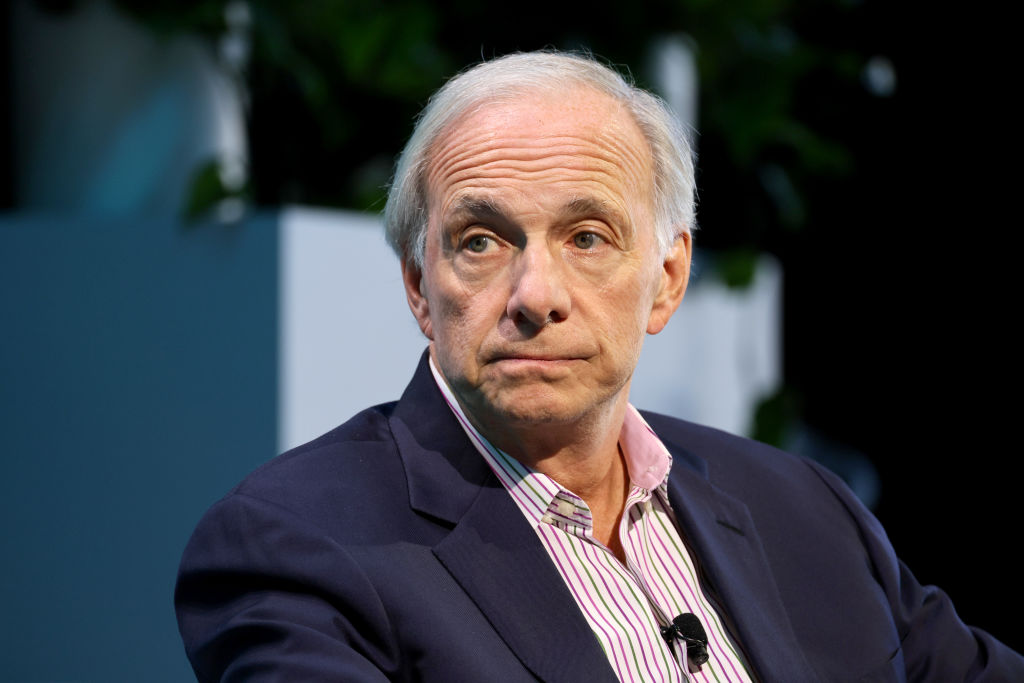ConocoPhillips To Buy Marathon Oil: What To Know
If ConocoPhillips' bid for Marathon Oil goes through, it will bring together two of the world's largest exploration and production companies.


Another big M&A announcement in the oil patch is making news after ConocoPhillips (COP) said it will buy Marathon Oil (MRO) for $17.1 billion in stock. The deal includes $5.4 billion in debt, bringing the enterprise value of the transaction to approximately $22.5 billion.
The purchase price represents a roughly 15% premium to Marathon stock's May 28 close at $26.45, sending its share price up by more than 9% Wednesday. COP stock, meanwhile, is down about 3%.
Under the agreement, Marathon shareholders will receive 0.255 shares of ConocoPhillips common stock for every share of MRO they currently own.

Sign up for Kiplinger’s Free E-Newsletters
Profit and prosper with the best of expert advice on investing, taxes, retirement, personal finance and more - straight to your e-mail.
Profit and prosper with the best of expert advice - straight to your e-mail.
"This acquisition of Marathon Oil further deepens our portfolio and fits within our financial framework, adding high-quality, low cost of supply inventory adjacent to our leading U.S. unconventional position," said Ryan Lance, chairman and CEO of ConocoPhillips, in a statement.
COP said that the transaction will be immediately accretive to its earnings, cash from operations, free cash flow and return of capital per share to shareholders. It expects to achieve a $500 million in cost and capital synergy run rate within the first full year of the close of the transaction, primarily due to reduced general and administrative costs, lower operating costs and improved capital efficiencies.
Following completion of the transaction, ConocoPhillips said it expects stock buybacks to exceed $7 billion in the first full year and over $20 billion in the first three years.
Separately, ConocoPhillips said it anticipates a 34% increase to its quarterly dividend, beginning in Q4 2024. This will bring its quarterly payout to 78 cents per share.
"We plan to raise our ordinary dividend by 34% in the fourth quarter and we will continue to target top-quartile dividend growth relative to the S&P 500 going forward," Lance said. "Additionally, we intend to prioritize share repurchases following the close of the transaction, with a plan to retire the equivalent amount of newly issued equity in the transaction in two to three years at recent commodity prices."
The transaction is subject to approval by Marathon shareholders, regulatory clearance and other closing conditions, ConocoPhillips said. If all goes as planned, the transaction is expected to close in the fourth quarter of this year.
Is ConocoPhillips stock a buy, sell or hold?
Analysts are mostly upbeat toward the oil stock, which isn't unsurprising considering its averaged a total annual return (price change plus dividends) of nearly 34% over the past three years.
According to S&P Global Market Intelligence, the consensus analyst target price for COP stock is $142.81, representing implied upside of more than 24% to current levels. Meanwhile, the consensus recommendation is a Buy.
Related Content
Get Kiplinger Today newsletter — free
Profit and prosper with the best of Kiplinger's advice on investing, taxes, retirement, personal finance and much more. Delivered daily. Enter your email in the box and click Sign Me Up.

Joey Solitro is a freelance financial journalist at Kiplinger with more than a decade of experience. A longtime equity analyst, Joey has covered a range of industries for media outlets including The Motley Fool, Seeking Alpha, Market Realist, and TipRanks. Joey holds a bachelor's degree in business administration.
-
 Starbucks 2025 Dress Code Changes: See the New Look
Starbucks 2025 Dress Code Changes: See the New LookThe 2025 Starbucks dress code change features a uniformed look as part of creating a more familar and friendly cafe experience.
By Sean Jackson
-
 Ray Dalio Is Ringing Alarm Bells About 'Something Worse Than a Recession'
Ray Dalio Is Ringing Alarm Bells About 'Something Worse Than a Recession'Bridgewater founder Ray Dalio has been sounding off about his concerns for the global economy as a result of tariffs and certain policies, as well as other factors.
By Alexandra Svokos
-
 Ray Dalio Is Ringing Alarm Bells About 'Something Worse Than a Recession'
Ray Dalio Is Ringing Alarm Bells About 'Something Worse Than a Recession'Bridgewater founder Ray Dalio has been sounding off about his concerns for the global economy as a result of tariffs and certain policies, as well as other factors.
By Alexandra Svokos
-
 Should You Hire a Public Adjuster for Your Insurance Claim?
Should You Hire a Public Adjuster for Your Insurance Claim?As natural disasters strike more often, insurance clients are asking, 'What should I do, or who should I hire, if my insurance company is jerking me around?'
By H. Dennis Beaver, Esq.
-
 Tips to Help Entrepreneurs Create Self-Sustaining Businesses
Tips to Help Entrepreneurs Create Self-Sustaining BusinessesWith the right processes and people in place, a truly sustainable business can be efficiently passed on to a successor and run profitably on its own.
By Jason L Smith, CEP®, BPC
-
 Navigating Annuity Taxation: A Guide for Financial Advisers
Navigating Annuity Taxation: A Guide for Financial AdvisersUnderstanding the essentials of taxation in retirement income strategies involving annuities helps ensure positive outcomes for clients.
By Jake Klima
-
 How Google Reviews Can Help (or Hurt) Financial Advisers
How Google Reviews Can Help (or Hurt) Financial AdvisersDon't leave your Google Business Profile unclaimed — someone else can make changes if they claim it. Also, here's what you can (and cannot) do with the reviews.
By Jeff Briskin
-
 Stock Market Today: Stocks Gain on Tech, Auto Tariff Talk
Stock Market Today: Stocks Gain on Tech, Auto Tariff TalkThe Trump administration said late Friday that it will temporarily halt tariffs on some Chinese tech imports.
By Karee Venema
-
 What Is the Buffett Indicator?
What Is the Buffett Indicator?"It is better to be roughly right than precisely wrong," writes Carveth Read in "Logic: Deductive and Inductive." That's the premise of the Buffett Indicator.
By Charles Lewis Sizemore, CFA
-
 10 Major AI Companies You Should Know
10 Major AI Companies You Should KnowThese 10 AI companies are at the forefront of machine learning. Find out how they’re driving innovation and jostling to be the biggest players in the game.
By Tom Taulli